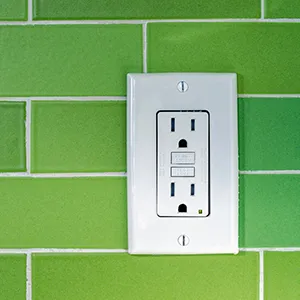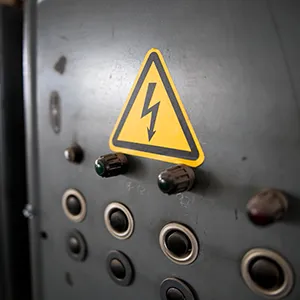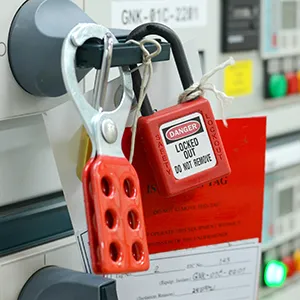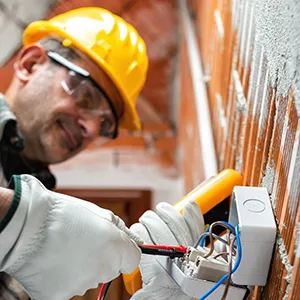Electrical hazards are a leading cause of fatalities in the construction industry. Workers face risks from exposed wiring, overhead power lines, faulty equipment, and improper lockout/tagout procedures. To address these dangers, OSHA established comprehensive electrical safety standards under 29 CFR 1926 Subpart K, which outlines employer responsibilities for protecting workers from electrocution and electrical injuries1.

OSHA’s Electrical Safety Requirements
OSHA’s electrical standards for construction require employers to implement the following key practices:
- Identify and mark utilities before beginning work to prevent accidental contact with live wires.
- Use Ground-Fault Circuit Interrupters (GFCIs) on all 120-volt, single-phase, 15- and 20-ampere receptacle outlets not part of the permanent wiring1.
- Ensure tools and equipment are grounded or double-insulated to prevent shock.
- Maintain safe distances from overhead power lines, typically at least 10 feet, depending on voltage1.
- Implement lockout/tagout (LOTO) procedures when servicing or maintaining electrical equipment to prevent accidental energization2.
These requirements are designed to prevent common electrical hazards such as arc flashes, electric shock, and electrocution.

The Scope of the Problem
1. Electrocution Is a Leading Cause of Death in Construction
According to the Bureau of Labor Statistics, electrocutions accounted for 5.3% of all construction fatalities in 2020, making it one of OSHA’s “Fatal Four” hazards3. The construction industry consistently ranks among the top three sectors for electrical-related deaths4.
2. High-Risk Tasks and Environments
The CDC reports that the highest number of electrocutions occur in construction, manufacturing, and utilities. Common causes include contact with overhead power lines, improper use of extension cords, and failure to de-energize circuits before maintenance4.
3. The Importance of Training
Training is essential to ensure that workers understand the risks and know how to protect themselves. OSHA requires that only qualified persons perform electrical work, and that all workers receive training appropriate to their role1.
A systematic review by the National Institute for Occupational Safety and Health (NIOSH) found that training significantly reduces the incidence of workplace injuries, especially when it includes hands-on practice and is tailored to the specific hazards of the job5.
Training should include:
- How to recognize electrical hazards
- Proper use of PPE and insulated tools
- Lockout/tagout procedures
- Emergency response protocols

Lockout/Tagout (LOTO) Procedures
LOTO procedures are critical for preventing accidental energization during maintenance. OSHA’s standard (29 CFR 1926.417) requires that circuits be de-energized, locked out, and tagged before any work begins2.
Workers must be trained to:
- Identify energy sources
- Apply and remove lockout devices
- Verify de-energization before starting work
Failure to follow LOTO procedures can result in severe injuries or fatalities, including burns, electric shock, and crushing injuries from unexpected equipment startup.

Best Practices for Employers
To improve electrical safety on construction sites, employers should:
- Conduct regular safety audits and inspections
- Provide multilingual training and signage
- Ensure all electrical work is performed by qualified personnel
- Maintain and test GFCIs and grounding systems
- Enforce strict adherence to LOTO procedures
Recommended OSHA Training Course(s):
Visit https://gbts.learnshare.com to view a full list of courses including the online OSHA 30-Hour construction course in both English and Spanish.
OSHA Outreach courses are provided in partnership with UL PureSafety, an OSHA-authorized online outreach provider. Meets OSHA and NYC Department of Buildings guidelines when actively proctored.
Contact Gallagher Bassett Technical Services at GBTSNYCinfo@gbtpa.com with any questions.
Sources
- Occupational Safety and Health Administration. (n.d.). 1926 Subpart K – Electrical. U.S. Department of Labor. https://www.osha.gov/laws-regs/regulations/standardnumber/1926/1926SubpartK
- Occupational Safety and Health Administration. (n.d.). Control of Hazardous Energy (Lockout/Tagout). https://www.osha.gov/control-hazardous-energy/
- Bureau of Labor Statistics. (2022). Workplace Injuries and Job Requirements for Construction Laborers. https://www.bls.gov/spotlight/2022/workplace-injuries-and-job-requirements-for-construction-laborers/home.htm
- Centers for Disease Control and Prevention. (2024). Electrical Safety in the Workplace. https://www.cdc.gov/niosh/electrical-safety/about/index.html
- Robson, L., Stephenson, C., Schulte, P., et al. (2010). A systematic review of the effectiveness of training & education for the protection of workers. National Institute for Occupational Safety and Health. https://www.cdc.gov/niosh/docs/2010-127/pdfs/2010-127.pdf
